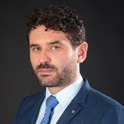Algorithms for Computer-Aided Design
A special issue of Algorithms (ISSN 1999-4893).
Deadline for manuscript submissions: closed (28 February 2020) | Viewed by 14660
Special Issue Editor
Interests: compliant mechanisms; smart-material-based transducers; variable stiffness actuators
Special Issues, Collections and Topics in MDPI journals
Special Issue Information
Dear Colleagues,
Computer-Aided Design (CAD), Engineering (CAE), and Manufacturing (CAM) software have unquestionably become essential tools for product design. CAD/CAE/CAM technologies are extensively used in several fields, including aerospace, automotive, earth-moving machines, and automated plants. Virtual prototypes can simulate mechanical and mechatronic systems, starting from the geometrical and parametric representation of parts, the study of complex devices during their motion (i.e., multibody analysis), the verification and, possibly, the optimization of their structural behavior (stresses and deformations), up to the simulation of the overall production process (digital factory). In the current literature, it is claimed that modern CAD/CAE/CAM may become so advanced that it will be possible to emulate complex systems with a degree of reliability comparable to physical testing. This Special Issue aims at providing an opportunity for researchers within academia and industry to share recent advances in the field, with special attention to algorithms and methodologies allowing integration of software tools from different domains (e.g., multi-body modeling, co-simulation frameworks, digital factory tools).
Prof. Dr. Giovanni Berselli
Guest Editor
Manuscript Submission Information
Manuscripts should be submitted online at www.mdpi.com by registering and logging in to this website. Once you are registered, click here to go to the submission form. Manuscripts can be submitted until the deadline. All submissions that pass pre-check are peer-reviewed. Accepted papers will be published continuously in the journal (as soon as accepted) and will be listed together on the special issue website. Research articles, review articles as well as short communications are invited. For planned papers, a title and short abstract (about 100 words) can be sent to the Editorial Office for announcement on this website.
Submitted manuscripts should not have been published previously, nor be under consideration for publication elsewhere (except conference proceedings papers). All manuscripts are thoroughly refereed through a single-blind peer-review process. A guide for authors and other relevant information for submission of manuscripts is available on the Instructions for Authors page. Algorithms is an international peer-reviewed open access monthly journal published by MDPI.
Please visit the Instructions for Authors page before submitting a manuscript. The Article Processing Charge (APC) for publication in this open access journal is 1600 CHF (Swiss Francs). Submitted papers should be well formatted and use good English. Authors may use MDPI's English editing service prior to publication or during author revisions.
Keywords
- CAD/CAM/CAE applications and algorithms
- Advanced algorithms for geometric modeling
- Integration of CAD/CAE methods and tools into engineering design processes
- CAE-centric design approaches
- Applications of flexible multi-body dynamics tools
- Virtual prototyping (VP) for complex products
- CAD/CAE methods and tools for multi-disciplinary and cooperative design





